The Case of the Missing Brand
By Stephen Hennis, ISHC
After more than 36 years as a Marriott, the Marriott Denver City Center converted to the Hilton flag this past December. Conversions certainly happen all the time, but this was more noteworthy as it was the first time Hilton’s full-service moniker adorned a hotel in downtown Denver in more than 25 years. And now Marriott sits with a noticeable vacancy on its brand map.
Looking at the major cities across the U.S., it is pretty rare to find a city center without a Hilton or a Marriott, or even a Westin or Hyatt. It’s curious to see where brands have planted their flags and which cities still have a void in their hotel offering. There’s also the question of “Who needs who?” Does the city need the brand to validate its status as a major market? Or does the brand need its footprint to capture more “shelf space” for distribution?
City Status
Activity emanates from the city core where businesses, events, and cultural venues are based in most metro areas. In virtually every city, the central business district (CBD) boasts the highest hotel room rates. Installing the sign of a prominent luxury hotel brand, namely Four Seasons or Ritz-Carlton, can often signify that a city has “made it.” Much like attracting a professional sports franchise or a Fortune 500 headquarters, a luxury hotel can improve the perception of a locale and spur further economic development. By the same token, a Kimpton or a W hotel has become an indicator of a market’s cool factor.
It’s no surprise that most full-service stalwarts have a presence in New York and Chicago (only Le Meridien is missing in both). San Francisco, Boston, DC, Dallas and Atlanta are also high in the rankings. Remarkably, brand coverage in some cities is higher than one might expect. Austin, Charlotte, Baltimore, Indianapolis and Cleveland all sit within the top 20. On the other end of the scale, it’s amazing how few of the brands have set roots down in the hot market of Portland. Several other up-and-coming cities like Raleigh, Louisville and Columbus, have a ways to go, but this also illustrates growth opportunities for the cities, developers and hotel companies alike.
Brand Footprint
For the hotel brand, it can also be a status symbol to have a flagship in certain locations, whether it’s a world-class city like New York or a hot spot like Austin. Focusing on the traditional full-service brands with the largest city center footprints, there is still potential for expansion. Overall, about half of the chart has “openings.” Even Hilton, after more than 90 years in operation, has a few empty slots. The strong city center coverage of Marriott, Hilton, and Hyatt is not the least bit shocking with convention center hotels in two-thirds of these markets flying one of the flags. Westin, formerly the jewel in Starwood’s crown, has also placed its stamp in most CBDs. Embassy Suites has a solid base in most urban centers as well, which speaks largely to its strength as a category killer.
While the Kimpton label has historically been more of a subtext for the hotels they operate, the brand name has shifted to the forefront of its properties in recent years placing it rather high in the footprint rankings. Of the flags that don’t sit under a larger brand umbrella, Omni has created a solid urban collection over the past decade through its pursuit of public-private hotel projects in major cities like Fort Worth, Dallas, Nashville and Louisville. Omni’s convention center hotel portfolio may soon rival those of Hilton, Hyatt and Marriott with additions slated for Oklahoma City and Fort Lauderdale. The youngest of the established full-service brands at only 20 years old, W clearly gained traction by focusing its development in primary urban markets and sits comfortably above several older brands.
The infographic below illustrates the brand coverage for established full-service brands across 40 major city centers, including properties that are under construction or planned. The brands are ranked by the number of properties in these city centers, and the cities are sorted by the number of major brands in their city center area. To clarify, the city centers in these markets are typically the city core (e.g. Atlanta does not include Buckhead, Los Angeles excludes Hollywood, Miami excludes Miami Beach, etc.). Thus, it’s possible that the brand sits in the market elsewhere. Moreover, this excludes resort markets where the convention center is located outside of the CBD or cities where the downtown is not the focal point (e.g. Orlando or Anaheim).
One interesting item of note: 25 years ago, the 22 brands below would have represented the flagships of 19 separate companies; today they comprise only 10 hotel groups, perhaps even less before the year is out…
Hyatt includes Hyatt, Hyatt Regency, Grand Hyatt & Park Hyatt
Radisson includes Radisson, Radisson Red & Radisson Blu
ATL Atlanta
AUS Austin
BAL Baltimore
BOS Boston
CHA Charlotte
CHI Chicago
CIN Cincinnati
CLB Columbus
CLE Cleveland
DAL Dallas
DC Washington, DC
DEN Denver
FW Fort Worth
HOU Houston
IND Indianapolis
KC Kansas City
LA Los Angeles
LOU Louisville
MEM Memphis
MIA Miami
MIL Milwaukee
MIN Minneapolis
NAS Nashville
NO New Orleans
NY New York
OMA Omaha
PHI Philadelphia
PHX Phoenix
POR Portland
PIT Pittsburgh
RAL Raleigh
SAA San Antonio
SAC Sacramento
SEA Seattle
SD San Diego
SF San Francisco
SJ San Jose
SLC Salt Lake City
STL St. Louis
TAM Tampa

